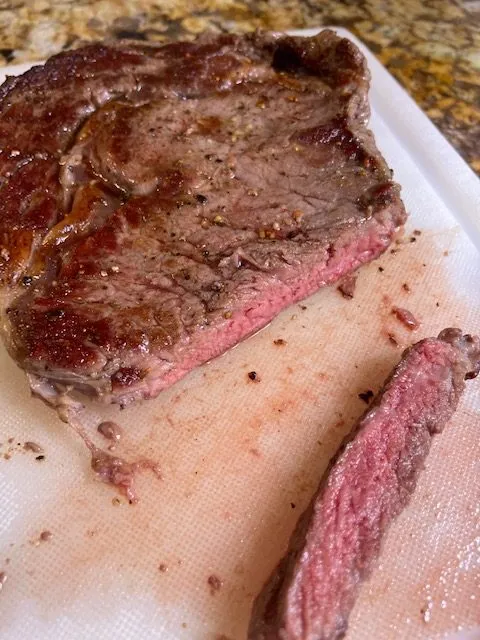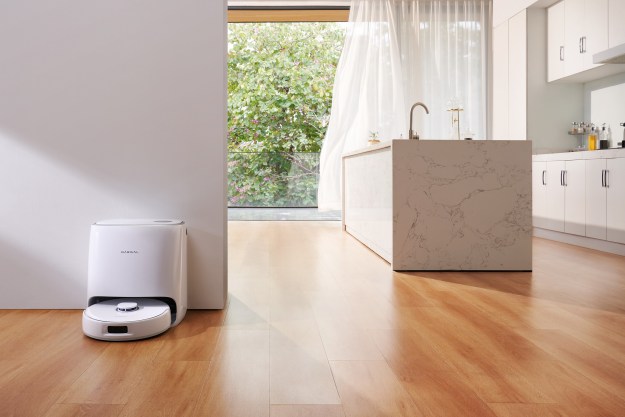A smart meat thermometer might not be the sexiest product in a smart home, but one that works well can turn even the best cooks into proper chefs. Enter the TempSpike, the newest smart meat thermometer from ThermoPro, a wireless Bluetooth device that can up your cooking game. I’ve been using this device for the past couple of weeks to see how it stacks up against others on the market and this is what I discovered.
TempSpike: Stylish meat accessory
The silver thermometer is sleek, despite its thick circumference. That said, it’s about the same size as other one-off wireless thermometers. All and all, the TempSpike is about the size of a typical stylus. The end cap is a bit larger than the probe itself and is ridged, making it easy to grip and insert into meat.
The TempSpike would give the novice cook a boost of confidence by keeping the guesswork out of your cooking time.
The charging case is sturdy. I particularly appreciated the space surrounding the top of the probe in the case because just about anyone could pull out the thermometer for use. Battery lights are located on top of the case so only a glance is necessary for Bluetooth connection and charging levels. As the charge is happening the light flashes red and then begins to slow. When it has a full charge the flashing stops completely. It was a bit confusing as flashing red to me is a warning and then no light at all makes me think it’s not charged at all. I would like to have seen a green light for go time!
There’s also an orange “S” button that you would press to silence the alarm. However, you can also do it on the app. The nice thing about that is if your phone is nearby you can make the alert stop, which can come in handy.
The TempSpike app does the work for you
The app is super easy to install, and you can get it directly from the iOS or Android store or using the QR code on the TempSpikes directions. I appreciate the large-screen display so you can see the temperature details from afar, and I like the option to choose the doneness of your meat (a feature we also loved in the company’s ThermoPro BBQ app). It’s much more convenient than having to keep a constant eye on a thermometer.
The app also displays both internal and ambient temperatures during cooking. The internal temperature begins to record immediately when the meat comes in contact with heat. The ambient temperature recording is the temperature of your surroundings, or room temperature — a useful feature for resting the meat. This information is important because it gives the meat time to reabsorb the juices. If you don’t take the ambient temperature and resting into consideration, you’ll lose more flavorful juices when the meat is cut. No one wants that.

You can also turn on and off alerts in the app, and the TempSpike case also has an alarm that goes off when it’s ready. So you’ll probably want to use one or the other if you plan on keeping the phone nearby. Having both features comes in handy — especially when you consider the 500-foot Bluetooth range. While I used the product, I wouldn’t say I got exactly 500 feet, but I could go to different floors in the house and still check on the status. However, if you do go too far the phone will emit a loud sound alerting you there’s no Bluetooth connection.
Cooking with the TempSpike
The thermometer itself needs to be inserted up to the line on the TempSpike — which is about 2 3/4-inches — into the middle of your cut of meat. Just take care not to pierce through it. The meat also needs to be thick enough to fit the circumference size of the device; otherwise, you’ll need to insert it sideways into your meat. You don’t want the probe recording the temperature of your pan. With that in mind, I’m not sure this is for every cut of meat. I’m talking to you, flank steak.

Among other meats, I chose a ribeye steak for this final test. I seared it on both sides on the stovetop in a cast iron pan then finished it in a 375-degree oven. You know, a pretty typical way to cook a steak. The nice thing about seeing the temperature was when it was about halfway to our target temp, I knew to put it in the oven.
As a decent cook, my instinct was to remove the steak from the pan before the app told me to. I wouldn’t have cooked the steak as long as the thermometer was indicating based on its thickness, but the ThermaPro knew better. The juices ran a beautiful brownish pink, indicating it was not undercooked and once I made that first slice I was delighted to see that it was just as I hoped: perfectly medium rare.

I had high hopes for the TempSpike — not only do I like its name, but I also was impressed by its predecessor, the ThermoPro TP25, four-prong thermometer. It’s ideal for grilling and doesn’t disappoint. At $100, the TempSpike seems to be competitively priced with a few features that make it stand out in a crowd of Bluetooth thermometers. ThermoPro seems to have its temperature reliability dialed in, giving you the ability to get it right the first time.


